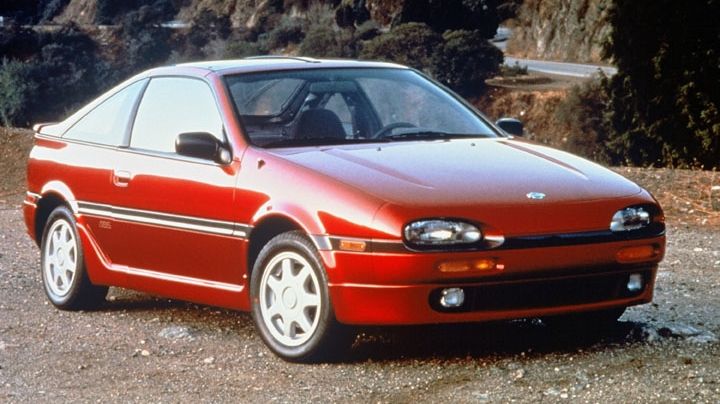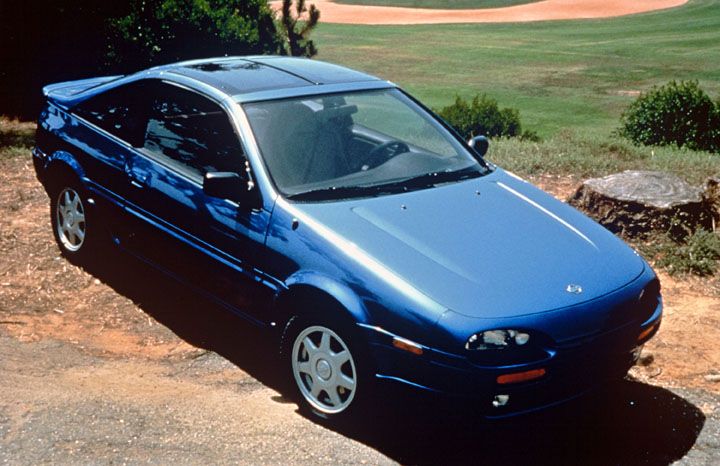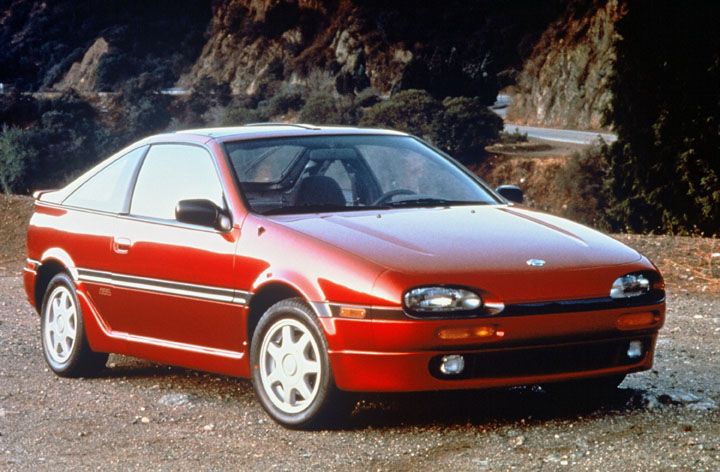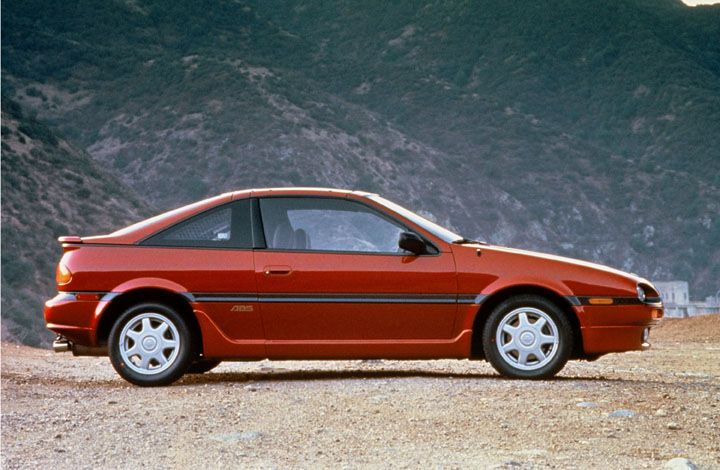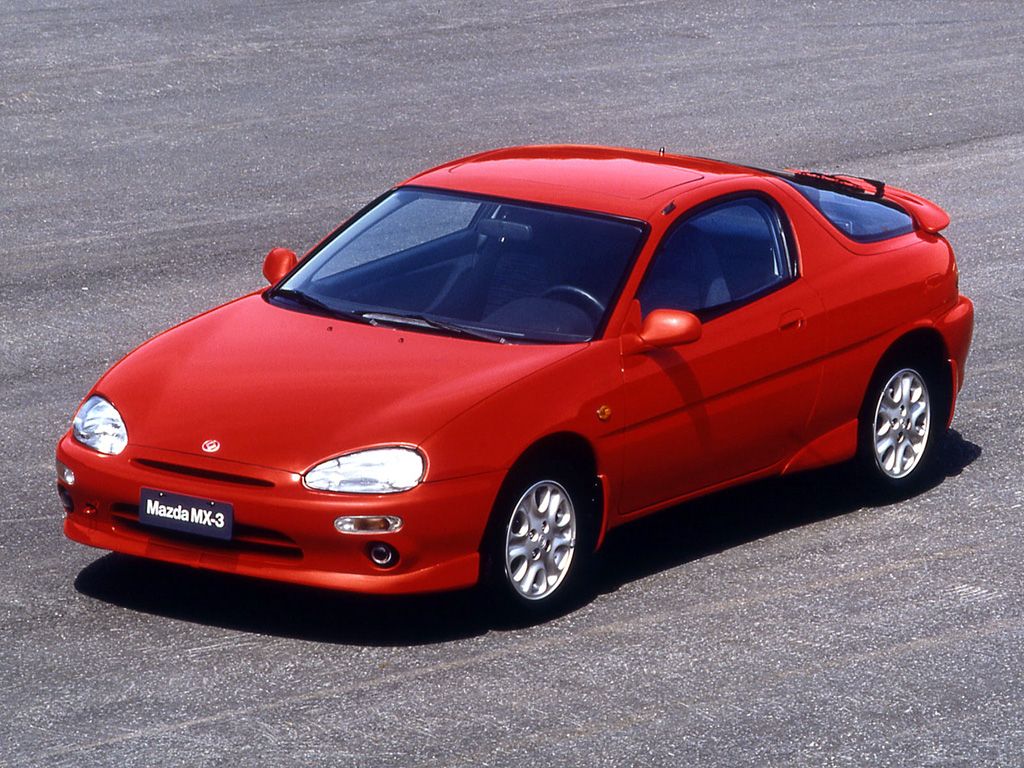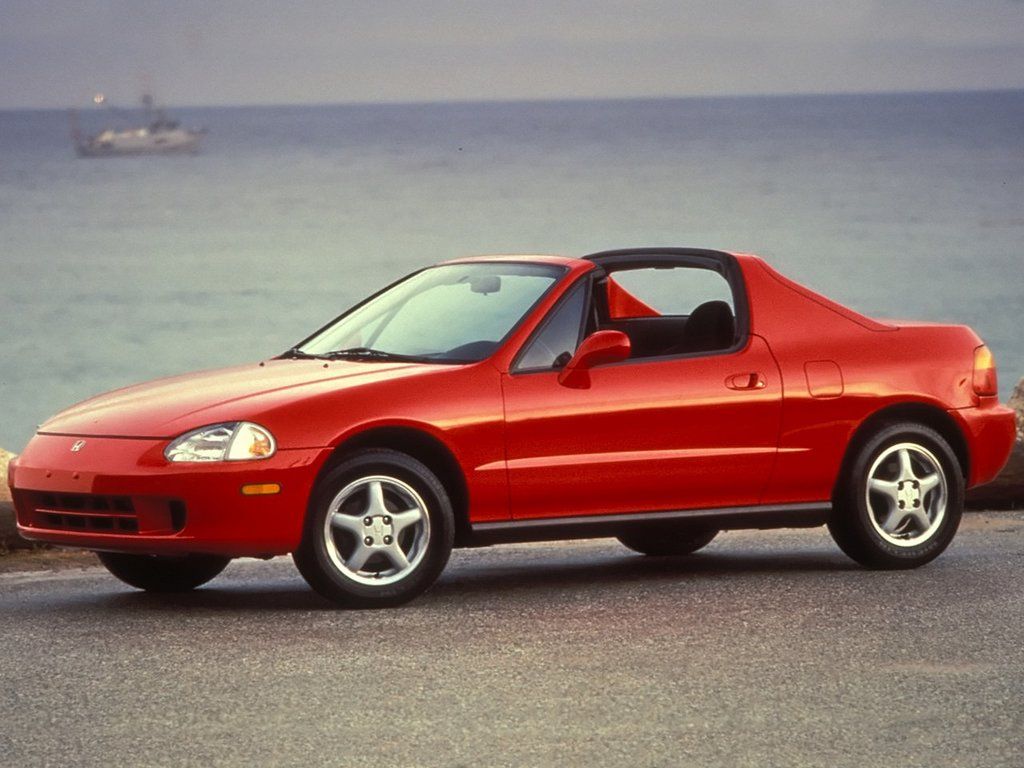Long before the Scion tC->ke1339 or Hyundai Veloster,->ke2534 there was the Nissan NX2000. Sold in the U.S. from 1991 to 1993 in moderate numbers, this baby 300ZX bridged the gap between sensible compact coupes->ke141 and sports cars.->ke506 It was one of the first cars aimed directly at the growing sport-compact market.
In the early 1990s, the Honda Civic->ke236 was beginning to be seen as the go-to vehicle for young enthusiasts who just weren't into muscle cars and couldn't afford the high-performance sports cars of the day. Small cars were beginning to go fast, and the wildly popular Honda CR-X->ke2779 spawned imitators among the Japanese, including the NX2000.Combining a compact body with the 150-horsepower, 2.0-liter powerplant from the Nissan Sentra SE-R, the NX2000 replaced the Pulsar in Nissan's lineup, and delivered entertaining performance with a decent measure of versatility. Along with the 240SX and 300ZX, the little hatch gave Nissan three visibly sporty vehicles.
The NX2000 was popular, though overshadowed in the market by the sleeper Sentra SE-R, whose more conventional styling and lighter curb weight made it a more attractive choice for many car buyers.Still, the NX2000 was a successful racer, a flyweight demon on the autocross track, and was considered one of the best-handling front-drivers in the world at the time.
nissan-nx2000
- Make: Array
- Model: nissan-nx2000
1991 - 1993 Nissan NX2000
- Make: Array
- Model: 1991 - 1993 Nissan NX2000
- Engine/Motor: inline-4
- Horsepower: 140
- Transmission: five-speed manual
- [do not use] Vehicle Model: Array
Exterior
The NX2000 sported unique and instantly recognizable styling. Unlike some of its competitors, it shared no body panels with the rest of Nissan's compacts, opting instead for a curvy and chunky body with distinctive oval-shaped headlamps.
The rounded, bumperless and grille-less front end were more precious than aggressive, and the wide 14x5-inch wheels on 195-series tires looked tiny, but offered plenty of grip. The NX2000 had short overhangs front and rear, and was quickly dated by its black plastic mirrors and body trim, but retained a distinctive look overall. Available T-tops offered a fresh-air alternative, and became standard in 1993.
Interior
Nissan's smoothly upholstered seats and tall, rounded instrument panel marked the NX2000 as one of the family from first glance. The interior was economy-car simple, with a plastic Nissan-family airbag steering wheel and white-on-black gauges similar to that of the Sentra's.
The sills were high, resulting in a sitting-in-a-bathtub feeling, but a low console provided reasonable interior space. With 16.9 cubic feet of cargo space behind the rear seats, the NX2000 made a decent errand-runner as well.Like most T-tops, the optional units suffered from consumer complaints of leaks and rattles. The NX2000 was noisier than the Sentra, and rear-seat room was practically nonexistent.
Drivetrain
Power for the NX2000 came from Nissan's 140-horsepower, 16-valve, DOHC 2.0-liter four-cylinder. Like the Sentra, whose platform it shared, a five-speed manual transmission was standard and a four-speed automatic optional. Though slightly heavier than the SE-R, the torquey little four-cylinder made the NX2000 an entertaining performer -- providing plenty of sound and fury over 3,000 rpm and spinning all the way up to 7,500. Performance was prioritized over fuel economy, so the NX2000 was lucky to see 30 mpg on the freeway. 0-to-60 mph took about eight seconds, which was respectable for the time.
Unlike some of its competitors, the NX2000 featured a fully independent suspension with MacPherson struts up front and parallel links at the rear. A limited-slip differential was standard equipment, and enabled the NX2000 to put its power down quickly. Rack and pinion steering with a high-effort rack returned good road feel. Anti-lock brakes were just becoming common in the early 1990s, and the NX2000 offered them only with the manual transmission. Although it shared a platform with the Sentra SE-R, the NX2000 got larger brakes, a lower ride height and wider wheels. A two-row radiator gave the NX2000 an edge on the track, as well.
Prices
The NX2000 was stickered for $13,680 in 1991, with the T-top as a $900 option. Air conditioning, power windows and cruise control were also options. The early 1990s were much different from the present day, when all of the above can be expected to be standard on small sporty coupes. Currently, the NX2000 is still a 20 year-old used car, albeit one that's hard to find in good condition. Production numbers for the NX2000 aren't available, but they aren't common. They're also at or near the nadir of their value curve. Kelley Blue Book rates an excellent condition NX2000 at under $2,000.
Competition
Honda Civic Del Sol
Introduced as a follow-up to the wildly popular CRX, the Civic Del Sol actually ended up being something of a misstep for Honda. Although it was popular, fans of the CRX were disappointed that the two-seat Del Sol was less performance oriented and less practical than its predecessor. Honda aimed for a sportier, open-air vehicle, making the car more of an affordable, efficient personal coupe.
Maxda MX-3
The dart-shaped MX-3 is perhaps best remembered for its high-revving, 1.8-liter V-6 engine. The only six-cylinder in its class, the MX-3 red lined at 7,000 rpm and featured a sophisticated fully independent suspension.It made a fitting junior partner to the rotary-engined RX-7 and Miata in Mazda's sport-focused lineup.
Conclusion
Nissan is no stranger to tweaking its subcompact coupes into entertaining performers, as the 510 and Sentra SE-R attest. The NX2000 was a slightly different take on that theme, however, with flashy styling to go along with its performance. Pristine examples are rare these days, but the car does have plenty of fans. This suggests that the NX2000 might be worth watching when it comes to early '90s sporty-car collectability.

